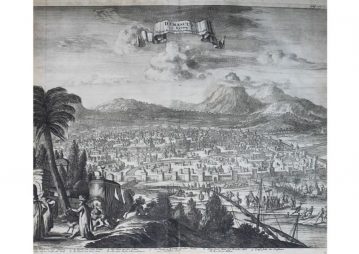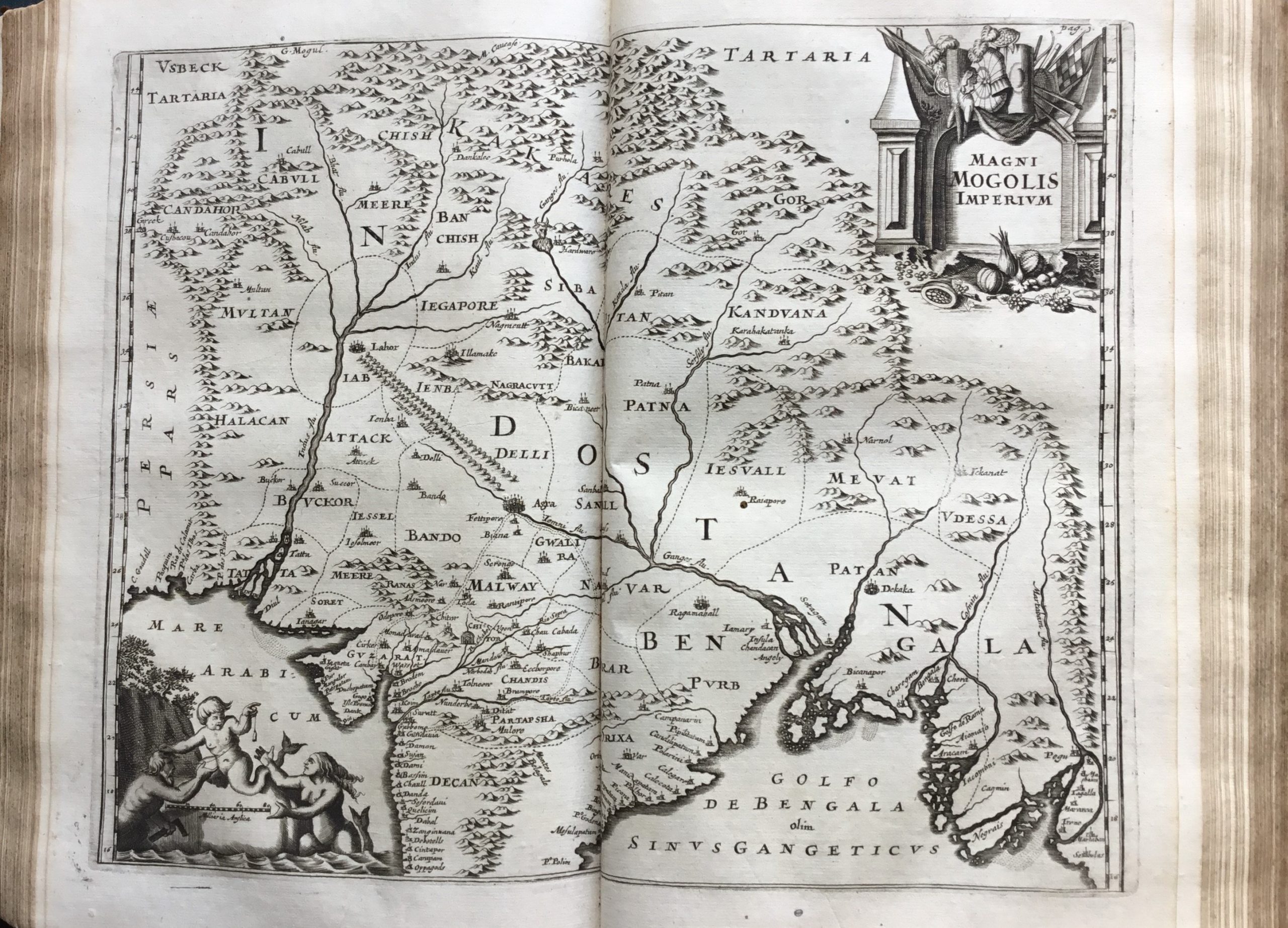Asia, oder ausführliche Beschreibung des Reichs des grossen Mogols und eines grossen Theils von Indien in sich haltend die Landschafften Kandahar, Kabul … . / Nebenst einer vollkommenen Vorstellung des Königreichs Persien. Übers. von J. C. Beer. Plus Italiänische, dalmatische, griechische und orientalische Reise-Beschreibung. Aus dem Französ. durch F. Menudier. TWO VOLUMES IN ONE.
Dapper, Olfert + Jacob Spon & George Wheler.
Synopsis
This is a copy of Dapper’s German translation by Jacob von Meursen, who engraved the copper plates, which were compiled and modified from earlier printed works. The many illustrations are beautiful, depicting landscapes, architecture, desert scenes, religious and historical events and much more, making this a famous and well known work.
Olfert Dapper (1635 – 1689) was a Dutch physician, writer and expert on Africa. In May 1658, he enrolled at Utrecht University and two years later was signing himself “Doctor medicinæ,” although there is no evidence that he ever received any medical training. In 1663, he published a historical description of Amsterdam. In 1665 he published a Dutch translation of the works of Herodotus. With the increased interest in exploration and foreign cultures, a flourishing trade in travel books developed in Holland in the mid 17th century. Following this trend, Dapper was just over thirty years old when he embarked on the geographic and ethnographic research that was to occupy him for the rest of his life. He threw himself into this vast undertaking, first tackling Africa (1668), then China (1670), Persia (1672) and the Middle East (1680). His books became well-known during his own time, with translations appearing in English, French and German. In 1986 a museum devoted to him, called Musée Dapper, was opened in Paris. Dapper never visited the exotic destinations about which he wrote. Mainly because of his utilisation of the accounts of Jesuit missionaries and explorers, Dapper steered clear from making value judgements about the societies he described. He avoided ethnocentric connotations and became the first person to adopt an interdisciplinary approach, weaving together the separate threads of geography, economics, politics, medicine, social life and customs. Unlike some of his contemporaries, Dapper produced a genuine work for posterity, not just a compendium of exotic curiosities.
Bibliographical references: Tiele 72; Blackmer 451; Atabey 322.
The second work of Spon & Wheler is considered the most important description of travels in Greece and the Levant, marking the beginning of a new period in the literary description of Greece. Spon, travelling together with George Wheler, produced accurate descriptions of antiquities allied to systematic topographical descriptions. Wheler met Jacob Spon in Venice in June 1675, with whom he travelled in Greece and the Levant in 1675 and 1676. Spon published a separate account of the journey in 1678. Wheler’s account, A Journey into Greece, was published in 1682. Among the places visited and described by Wheler were Zante, Delos, Constantinople, Prusa ad Olympum, Thyatira, Ephesus, Delphi, Corinth, and Attica. He gave an account of the antiquities of Athens, and brought home marbles and inscriptions. He made considerable use of coins in his book, and paid attention to botany. He brought home plants that had not been cultivated in Britain, including a Hypericum.
Bibliographic references: Blackmer 1586; Weber 406; Willems 1936, for 1679 French edition.








